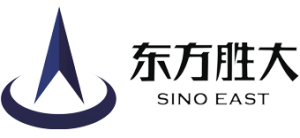Checkered steel plate is also called reticulated steel plate. A steel plate with a convex (or concave) pattern on the surface is a steel plate with a rhombus or ridge on the surface.
The pattern can be a single diamond shape, a lentil shape or a round bean shape, or two or more patterns can be appropriately combined to form a combined pattern plate.
The pattern mainly plays a role of anti-skid and decoration. The combined effect of anti-skid ability, bending resistance, metal saving and appearance of the combined checkered plate is significantly better than that of the single checkered plate.
Patterned steel plates are widely used in shipbuilding, boilers, automobiles, tractors, train cars and construction industries.
Because of the ribs on the surface, the patterned steel plate has anti-skid effect, and can be used as floor, factory escalator, work frame pedal, ship deck, automobile floor, etc.
Checkered steel plate is used for the treads of workshops, large equipment or ship walkways and stairs. It is a steel plate with diamond-shaped or lentil-shaped patterns pressed on the surface.
The steel plate is produced by ordinary carbon steel No. 1-3 B steel, the thickness is 2.5-8 mm, the width is 600-1800 mm, and the length is 2000-12000 mm.
The specifications of checkered steel plates are expressed in terms of basic thickness (not counting the thickness of the ribs), and there are 10 specifications of 2.5-8 mm. No. 1-3 is used for checkered steel plate.
The checkered steel plate shall be delivered according to actual weight or theoretical weight;
Marking example: made of Q235-A, the size is 4*1000*4000mm.
Round bean pattern steel plate, its mark is: round bean pattern steel plate Q235-A-4*1000*4000-GB/T 3277-91
Diamond pattern steel plate, its mark is: Diamond pattern steel plate B 3-4*1000*4000-GB 3277-82
The steel plate is delivered in the hot-rolled state; the surface of the pattern steel plate must not have bubbles, scars, cracks, folds and inclusions, and the steel plate must not have delamination.
The surface quality is divided into two levels:
Ordinary precision: the surface of the steel plate is allowed to have a thin layer of iron oxide scale, rust, surface roughness caused by the peeling of iron oxide scale, and other local defects whose height or depth exceeds the allowable deviation. Unobvious burrs and individual traces whose height does not exceed the pattern height are allowed on the pattern.
Higher precision: Thin oxide scale, rust, and other local defects whose height or depth does not exceed half of the thickness tolerance are allowed on the surface of the steel plate.
The pattern is intact, and local slight burrs whose height does not exceed half of the thickness tolerance are allowed on the pattern.
The size of the checkered steel plate should meet the following requirements:
Basic thickness: 2.5, 3.0, 3.5, 4.0, 4.5, 5.0, 5.5, 6.0, 7.0, 8.0mm.
Width: 600~1800mm, upgraded according to 50mm.
Length: 2000~12000mm, upgraded according to 100mm.
Upon agreement between the supplier and the buyer, the patterned steel plate or coiled patterned steel strip with dimensions other than those specified in this standard can be supplied.
